The Domestic Sources of American Foreign Policy
The Domestic Sources of American Foreign Policy
Insights and Evidence
Sixth Edition
Edited by James M. McCormick
ROWMAN & LITTLEFIELD PUBLISHERS, INC.
Lanham Boulder New York Toronto Plymouth, UK
Published by Rowman & Littlefield Publishers, Inc.
A wholly owned subsidiary of The Rowman & Littlefield Publishing Group, Inc.
4501 Forbes Boulevard, Suite 200, Lanham, Maryland 20706
www.rowman.com
10 Thornbury Road, Plymouth PL6 7PP, United Kingdom
Copyright 2012 by Rowman & Littlefield Publishers, Inc.
All rights reserved . No part of this book may be reproduced in any form or by any electronic or mechanical means, including information storage and retrieval systems, without written permission from the publisher, except by a reviewer who may quote passages in a review.
British Library Cataloguing in Publication Information Available
Library of Congress Cataloging-in-Publication Data
The domestic sources of American foreign policy : insights and evidence / [edited
by] James M. McCormick. 6th ed.
p. cm.
Includes bibliographical references and index.
ISBN 978-1-4422-0960-2 (cloth : alk. paper) ISBN 978-1-4422-0961-9
(pbk. : alk. paper) ISBN 978-1-4422-0962-6 (electronic)
1. United StatesForeign relations19451989. 2. United StatesForeign
relations1989 3. United StatesForeign relationsDecision making.
4. United StatesForeign relations administration. I. McCormick, James M.
E840.D63 2012
327.73dc23 2012010219
 The paper used in this publication meets the minimum requirements of American National Standard for Information SciencesPermanence of Paper for Printed Library Materials, ANSI/NISO Z39.48-1992.
The paper used in this publication meets the minimum requirements of American National Standard for Information SciencesPermanence of Paper for Printed Library Materials, ANSI/NISO Z39.48-1992.
Printed in the United States of America
To the students in my American foreign policy courses, whose insights and questions have taught me a great deal
Acknowledgments
The Future of American Power: Dominance and Decline in Perspective by Joseph S. Nye Jr., from The Future of American Power, Foreign Affairs , vol. 89, no. 6 (November/December 2010): 212.
Think Again: American Decline by Gideon Rachman. From Think Again: American Decline, Foreign Policy , no. 184 (January/February 2011): 5963.
The Tea Party, Populism, and the Domestic Culture of U.S. Foreign Policy by Walter Russell Mead. Abridged from The Tea Party and American Foreign Policy, Foreign Affairs , vol. 90, no. 2 (March/April 2011): 2844.
Ethnic Interest Groups in American Foreign Policy by James M. Mc-Cormick. Abridged from Ethnic Interest Groups and American Foreign Policy: A Growing Influence? in Allan J. Cigler and Burdett A. Loomis, eds., Interest Group Politics , 8th ed. (Washington, DC: CQ Press, 2012), 31744.
The Israel Lobby by John Mearsheimer and Stephen Walt. Abridged from The Israel Lobby, London Review of Books , vol. 28, no. 6 (March 23, 2006): 312.
American Veterans in Government and the Use of Force by Peter D. Feaver and Christopher Gelpi. Excerpt from The Impact of Elite Veterans on American Decisions to Use Force, in Peter D. Feaver and Christopher Gelpi, Choosing Your Battles: American Civil-Military Relations and the Use of Force (Princeton, NJ: Princeton University Press, 2004), 6494. The references were taken from pages 215, 21920, and 22224.
Events, Elites, and American Public Support for Military Conflict by Adam J. Berinsky. Abridged and edited from Assuming the Costs of War: Events, Elites, and American Public Support for Military Conflict, Journal of Politics , vol. 69, no. 4 (November 2007): 97597.
Person and Office: Presidents, the Presidency, and Foreign Policy by Michael Nelson. An extensively revised and expanded version of U.S. Presidency, in Joel Krieger, ed., The Oxford Companion to the Politics of the World , 2nd ed. (New York: Oxford University Press, 2001), 69092.
Leading through Civilian Power by Hillary Rodham Clinton. Slightly abridged from Leading through Civilian Power, Foreign Affairs , vol. 89, no. 6 (November/December 2010): 1324.
A Leaner and Meaner Defense by Gordon Adams and Matthew Leatherman. Slightly edited from A Leaner and Meaner Defense, Foreign Affairs , vol. 90, no. 1 (January/February 2011): 13952.
Why Intelligence and Policymakers Clash by Robert Jervis. Slightly abridged from Why Intelligence and Policymakers Clash, Political Science Quarterly , vol. 125, no. 2 (Summer 2010): 185204.
Policy Preferences and Bureaucratic Position: The Case of the American Hostage Rescue Mission by Steve Smith. Abridged and reprinted with permission from Policy Preferences and Bureaucratic Position: The Case of the American Hostage Rescue Mission, International Affairs , vol. 61, no. 1 (Winter 1984/5): 925.
Roles, Politics, and the Survival of the V-22 Osprey by Christopher M. Jones. Updated for this edition by the author from Roles, Politics, and the Survival of the V-22 Osprey, Journal of Political and Military Sociology , vol. 29, no. 1 (Summer 2001).
NATO Expansion: The Anatomy of a Decision by James M. Goldgeier. Abridged and edited from NATO Expansion: The Anatomy of a Decision, Washington Quarterly , vol. 21, no. 1 (Winter 1998): 85102.
Sources of Humanitarian Intervention: Beliefs, Information, and Advocacy in U.S. Decisions on Somalia and Bosnia by Jon Western. Adapted by the author from Sources of Humanitarian Intervention: Beliefs, Information, and Advocacy in U.S. Decisions on Somalia and Bosnia, International Security , vol. 26, no. 4 (Spring 2002): 11242.
Last Stand by Seymour M. Hersh. Slightly edited from Last Stand, New Yorker , vol. 82, issue 21 (July 10 and 17, 2006): 4243, 4549.
Obama: The Consequentialist by Ryan Lizza. Abridged from The Consequentialist, New Yorker , vol. 87, issue 11 (May 2, 2011): 4455.
Introduction
The Domestic Sources of American Foreign Policy
On November 4, 2008, Barack Obama won the presidency with 365 electoral votes and 53 percent of the popular vote. With that victory, he appeared to be foreshadowing significant change in Americas foreign and domestic policy. Indeed, he called for a new direction in American foreign policy, one that would set his approach apart from the previous administration. Under his administration, the United States would pursue a foreign policy based on the promotion of American domestic values, but it would also seek greater cooperation (or partnership) with other nations in addressing pressing global issues. President Obama outlined some of the components of this approach in foreign policy addresses in Prague, Moscow, Cairo, and Accra during the first six months of his presidency: The United States would support the promotion of democracy around the world, but it would not impose it; the United States would seek cooperation with other states to renew our prosperity and to provide for our common security; and the United States would address our [common] problems... through partnership because our progress must be shared. In all, such an approach not only emphasized the importance of interdependence in addressing global problems but also reminded us of the inevitable nexus between foreign and domestic policy.
The linkage of foreign and domestic policy for the United States and other countries is hardly a new phenomenon, but those ties have accelerated in recent decades, largely fueled by the process of globalization. Globalizationthe political, economic, and social forces that are drawing peoples together regardless of state boundariescontinues to increase dramatically in the first decade of the twenty-first century, and the distinctions between foreign and domestic policies across a broad spectrum of issues are increasingly blurred. The expansion of intergovernmental organizations in the world, the rise of more and more nongovernmental organizations globally, and the growth of transnational linkages through the Information Revolution of cyberspaceall have reduced the significance of national boundaries and geographical distance in addressing many policy issues.




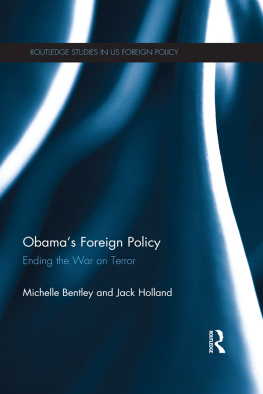
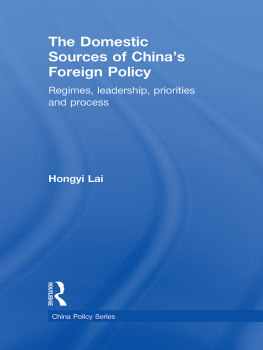
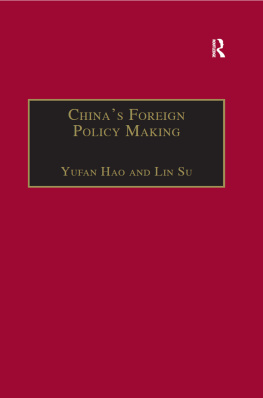
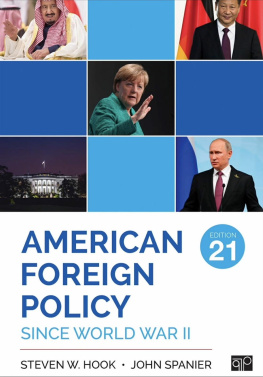


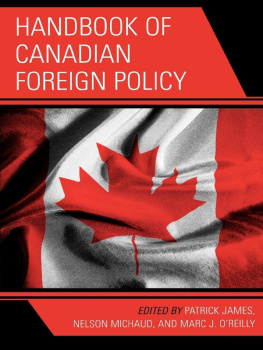

 The paper used in this publication meets the minimum requirements of American National Standard for Information SciencesPermanence of Paper for Printed Library Materials, ANSI/NISO Z39.48-1992.
The paper used in this publication meets the minimum requirements of American National Standard for Information SciencesPermanence of Paper for Printed Library Materials, ANSI/NISO Z39.48-1992.